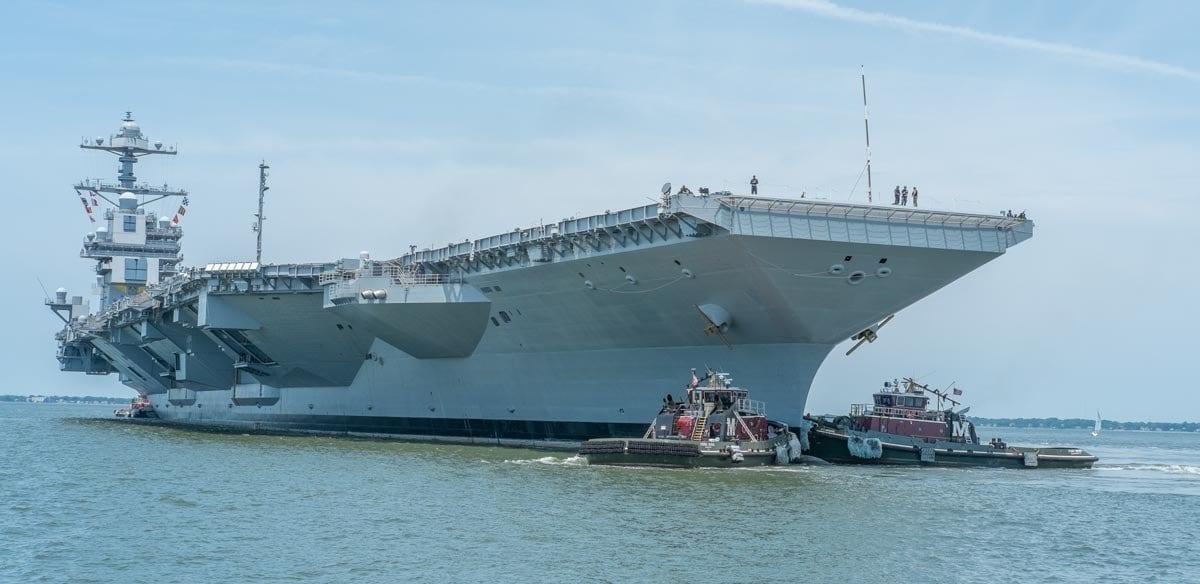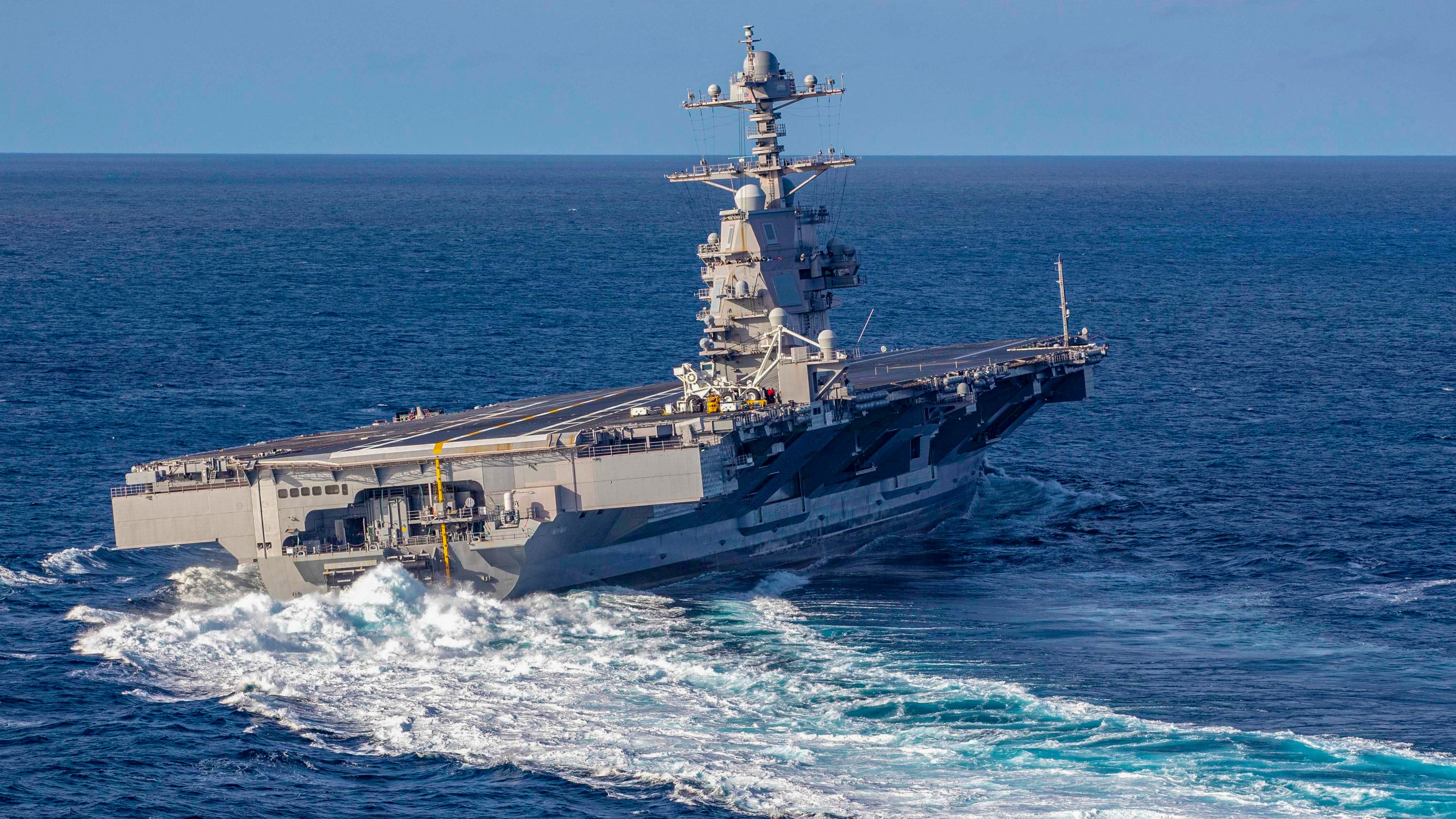The New Year is bringing a revamped effort by Big Navy to transform the delayed and over-budget aircraft carrier Gerald R. Ford from albatross to operational.
In a Dec. 20 message to the fleet, Acting Navy Secretary Thomas Modly laid out a timeline to reach key goals, from flight deck certification to fixing faulty weapons elevators and commencing a full ship shock trial.
Modly also slated a “Make FORD Ready” summit for Thursday designed to bring private industry and military minds together to finally fix the flattop.
“With the successful completion of (the Ford’s) Post Shakedown Availability and subsequent Independent Steaming Events, finishing our work and delivering this capability to the fleet as quickly and effectively as possible is one of my highest priorities,” Modly wrote.
After Thursday’s summit concludes, Modly, Chief of Naval Operations Adm. Mike Gilday and other Pentagon leaders will receive monthly status updates on the carrier’s progress, he wrote.
“The FORD is just the first ship of this new class. It must set the standard for those that will follow and with our diligence and commitment, it will,” he continued.
“Let’s finish the job.”
RELATED

Plagued by delays and cutting-edge equipment that does not work, Ford’s cost was initially capped at $10.5 billion but ballooned to more than $13 billion.
The Congressional Research Service warned last year that the price could increase even more.
“The American taxpayers have invested significant capital into this ship and they deserve nothing less,” Modly said in his message.
“We are going to make FORD ready with all hands on deck, as one team, relentlessly focused on achieving the following tasks and timelines.”
RELATED

The milestones set by Modly in his message include finishing all aircraft compatibility testing by the end of March, the same deadline for when the Navy reaches and maintains “ship visual and material conditions to the highest standards.”
By June, the flight deck certifications must be completed and manning levels set to support “all planned operations for key events and deployment.”
Before September ends, two of Ford’s lower stage elevators must be completed so that weapons can be moved from the warship’s magazines. The remaining five advanced weapons elevators must be finished by the end of June in 2021, prior to the full ship shock trial.
By the end of March 2021, all maintenance documents must be delivered. Three months later, combat systems testing and certification must be finished.
Ford’s crew has until the end of 2021 to be fully trained to support certification and deployment. Three months later, all parts must be delivered to the carrier.
“My expectation is that we will work with diligence and speed to accelerate each deadline if possible,” Modly added.
The Ford fiasco has drawn bipartisan ire on Capitol Hill.
Senate Armed Services Committee Chairman Jim Inhofe, an Oklahoma Republican, said last summer that the Navy’s arrogance about flattop Ford “ought to be criminal.”
And at an October House Armed Services Readiness Subcommittee hearing, U.S. Rep. Elaine Luria — a Virginia Democrat and retired surface warfare officer — grilled the brass on the Ford’s long journey to operational status.
Vice Adm. Thomas Moore, head of Naval Sea Systems Command, conceded during the hearing that Ford was supposed to deploy in 2018, but the sea service is now working to go to sea by 2024.
Luria lamented the Navy’s lack of answers and questioned the money spent on a carrier she called a $13 billion “nuclear powered floating barge that’s not deployable.”
While Modly’s predecessor, Richard Spencer, sometimes bristled at lawmaker frustration over the Ford, Modly told Defense News this week that he thinks the Ford’s failure to deploy until 2024 “is not acceptable.”
“One of the things I did since taking this seat is put the entire Department of the Navy on notice that the Ford is a priority to me,” he said.
“It’s not good for the Navy to have our most expensive asset be a poster child for what we can’t do right,” Modly added. “It’s a complicated ship, it’s going to be an amazing ship once everything is working, and we all need to make sure that’s the case.”
To meet his deadlines, Modly pointed to a series of “concrete steps” the sea service has taken, including moving Rear Adm. James Downey — the head of the Program Executive Office Aircraft Carriers — to Newport News permanently “so that he can be the accountable party.”
Norfolk-based Fleet Forces Command also has assigned a two-star to “make sure we’re headed in the right direction,” Modly said.
Correction: A previous version of this story incorrectly identified the head of Program Executive Office Carriers.
Geoff is the managing editor of Military Times, but he still loves writing stories. He covered Iraq and Afghanistan extensively and was a reporter at the Chicago Tribune. He welcomes any and all kinds of tips at geoffz@militarytimes.com.




